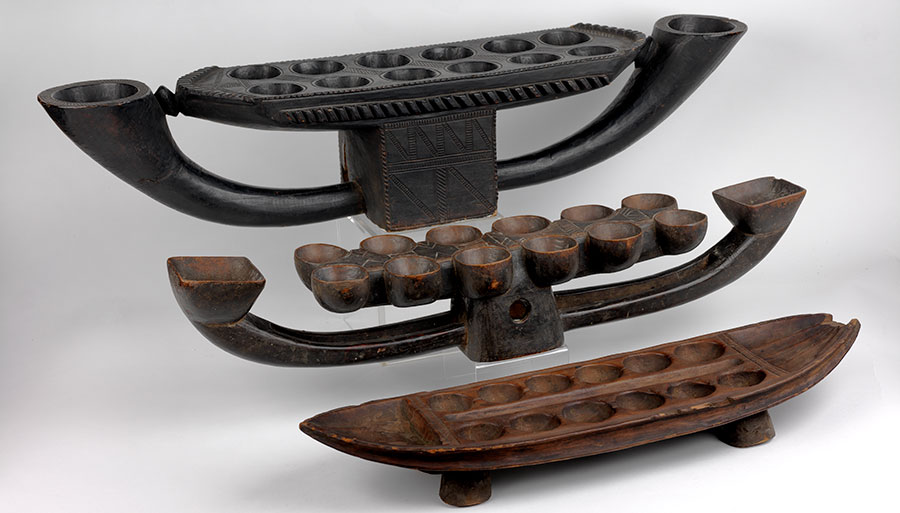
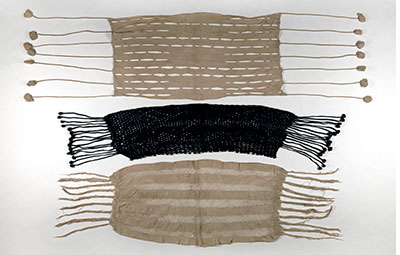
Arican exhibits at world’s fairs— including both native peoples and the objects of their daily life— provided American and European visitors to fairs with an opportunity to see cultures vastly different from their own. Some ethnographic exhibits supported the idea of the “other,” providing evidence of diverse “exotic” groups that had their own distinct cultures. These exhibits often reinforced racist ideas and stereotypes about Africans. Objects, and the cultures they represented, were used directly or indirectly in a comparative way to illustrate the advances of imperialist nations.
In 2003, the Museum acquired a collection of culturally and historically significant artifacts that had been exhibited at the 1893 World’s Columbian Exposition in Chicago and the 1900 Exposition Universelle in Paris. Many of the objects were later exhibited at the Philadelphia Commercial Museum (later the Civic Center Museum), which closed in 1994. This acquisition of over 2,000 African objects greatly enhanced our existing collection and included textiles, sculpture, charms and various forms of adornment, clothing, furniture, and other objects of daily life from all regions of Africa.
1893: Liberia at the World’s Columbian Exposition
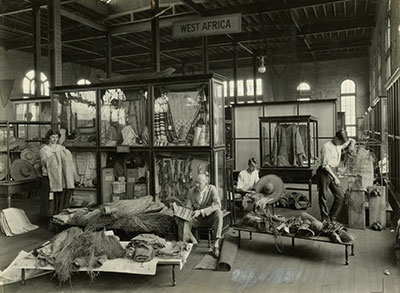
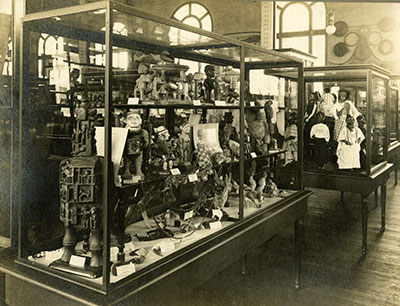
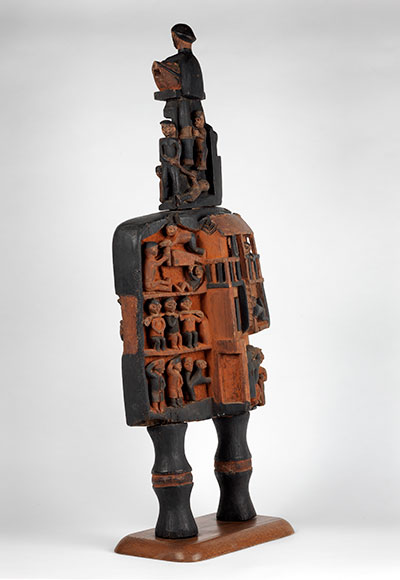
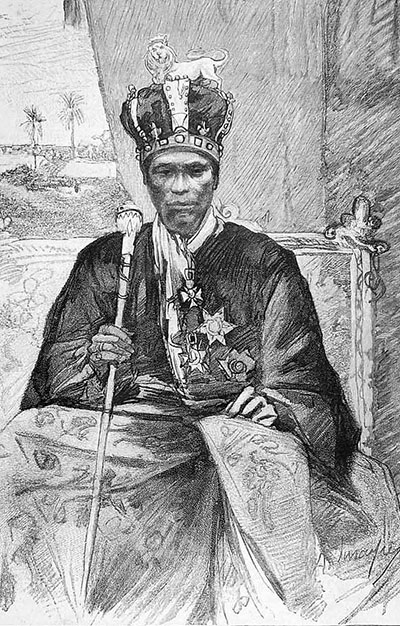
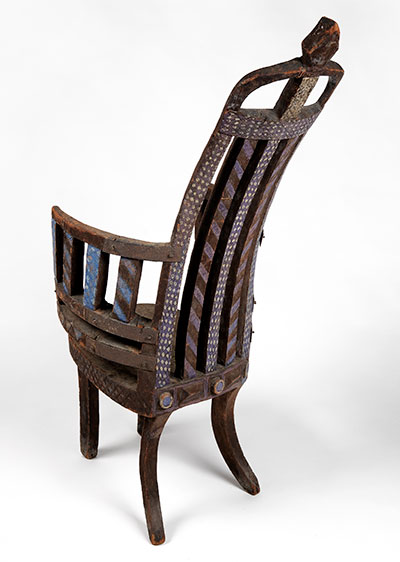
Noted for its amusement park, the World’s Columbian Exposition in Chicago is perhaps equally famous for well-publicized protests against fair organizers by African Americans. The Exposition organizers refused to work with African American leaders on an exhibit presenting African American life and accomplishments since the end of slavery. However, as fate would have it, the country of Haiti was invited to have a pavilion at the fair and its government chose Frederick Douglass as a delegate to represent them. Even though African Americans were unable to fully participate in the planning of the fair, Douglass used his attendance at the pavilion to promote equal rights while sharing with fairgoers the successes and challenges facing African Americans.
Two African countries were at the fair— Dahomey (now Republic of Benin) was featured in one of the ethnographic exhibits on the Midway Plaisance in a “Dahomey Village,” and the Liberian Government had an exhibit in the Agricultural Hall. Liberia’s purpose in attending the fair was to encourage investment in Liberia, a country that was recently settled by former slaves. Although the Liberian product on display that held the greatest interest was coffee, Moses Handy, in the 1893 Official Directory of the Exposition, provided an extensive list of other items in the exhibit, which included “specimens of iron, fishing contrivances, canoes, charms, quaint musical instruments, ivory, idols, books of the Koran, jewelry, skins of native animals, oils, seeds, cane sugar and syrups, pepper, medicinal plants, nuts, native dyes, coins, minerals, dirks and knives, spears, bows and arrows, rice and coffee, palm oil, palm kernels, arrowroot, camwood, hardwoods, ivories…Castor oil bean, ginger, assorted fibres [sic], cocoa, postage stamps, ropes, games (Pesseh and Queah Tribe Poo Boards), draft board (game), swords, strainers, Bamboo chair, fish net, embroidered gowns, hammocks, palm soap, country cloth, house models…and various articles showing the manners, customs and habits of the natives.”
Pictured in this article are items of clothing that may have been worn at the Liberian pavilion and several game boards that were used to play mancala, a game still popular in Africa and other parts of the world. The game boards were first published by Robert Stewart Culin, an American ethnographer and Director of the Museum of Archaeology and Paleontology (1892–1899), now the Penn Museum. Culin was a games expert who also served as Curator of the Asian, American, and General Ethnology Sections of the Museum until 1903. Culin attended the 1893 Exposition and noted that 11 game boards were on exhibit. According to Dr. Culin, to pass the time at the exposition, the men at the Liberian exhibits played mancala, or Poo, as it is known in some parts of Liberia.
1900: Dahomey at the Exposition Universelle
Only a small number of objects came to our collection from the Dahomey village (now Republic of Benin) at the 1900 Paris Exposition. The objects in the Exposition had been collected by the French Colonial Office between 1880 and 1885, during a period referred to as the “Scramble for Africa” when African territories were colonized by European powers.
By 1900, Dahomey was part of the French colonial empire and, as a result, Dahomean villagers were featured in French expositions. Some of the objects that are now in the Penn Museum collection that were displayed in the Dahomey pavilion were assembled by King Toffa I (ca. 1850–1908) of Porto Novo and presented to fair organizers. The king was known for his good relationship with French colonial administrators. One of the most fascinating objects from his collection is a bas-relief storyboard sculpture, which may have been kept in the “Dahomey Fetish House” at the fair. The sculpture is a mnemonic device that combines mythological symbols with representations of an historic event. In addition, a wooden chair from King Toffa I is also part of the collection. Inventory notes from the Commercial Museum (dated 1954) indicate that the chair, which showed a “strong European influence,” had been broken and later repaired “with iron plates by a native blacksmith.” Other objects such as carved bosses from the palace doors, stools, and a mask were also associated with the king.
1900: Madagascar at the Exposition Universelle
Madagascar, another recently colonized territory, was presented in a three-story palace on the square of the Trocadero at the 1900 Paris Exposition. Visitors viewed murals as well as displays of plants, animals, models of homes, and clothing, and were even offered recommendations on what to carry if traveling to Madagascar. Over 100 Malagasy people demonstrated weaving (using a ground loom), made pottery, played music, and went about their daily activities, as normally as possible while being watched by fairgoers.
When the Commercial Museum closed, a variety of hats, baskets, and textiles were added to the small Malagasy collection already held by the Penn Museum. The Malagasy people wove with a wide range of fibers such as raffia, cotton, and silk; the type of fiber used depended on the region. The cloth would have been wrapped around the body, with the meaning of the clothing determined by the size, color, design, and material.
Objects exhibited at early world’s fairs provide us with an opportunity to not only study the past but also to reflect on and discuss these peoples and cultures today. With this acquisition the Museum has inherited all of the history that surrounds these objects as well as an obligation to share the cultural and historical stories now permanently linked to this collection.
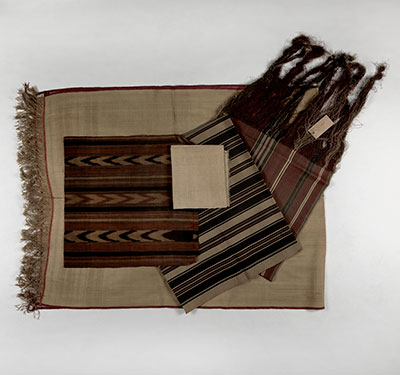

Malagasy hats and baskets are now part of the Museum collection. UPM object #2003-65-60, 2003-65-52, 2003-65-9AB
DWAUNE LATIMER is Friendly Keeper in the African Section.
For Further Reading
Lindfors, Bernth. Africans on Stage: Studies in Ethnological Show Business. Bloomington: Indiana University Press, 1999.
Paddon, A.R., and S. Turner. “African Americans and the World’s Columbian Exposition” Illinois Historical Journal 88.1 (1995): 19-36.
